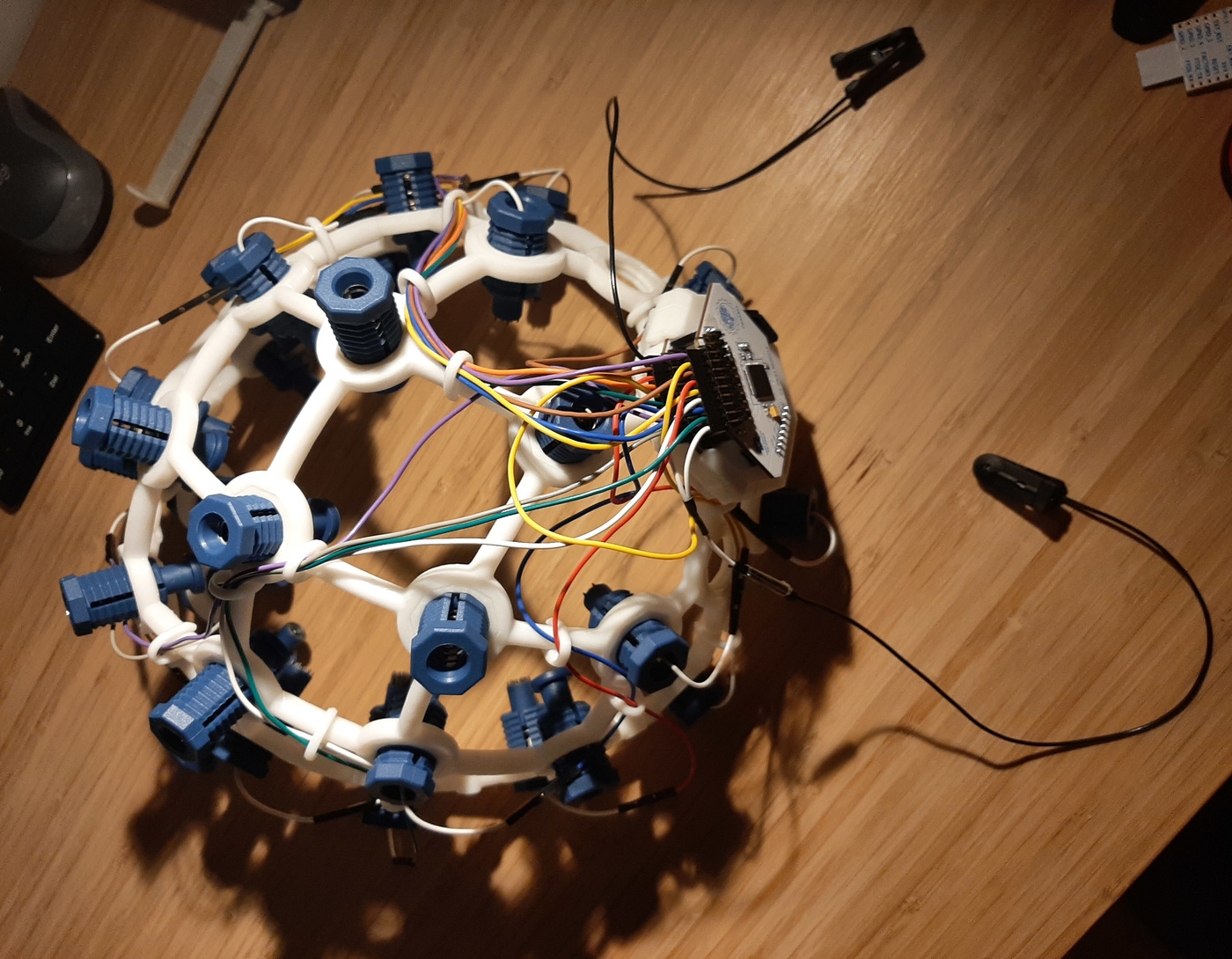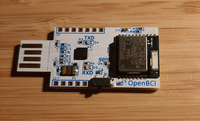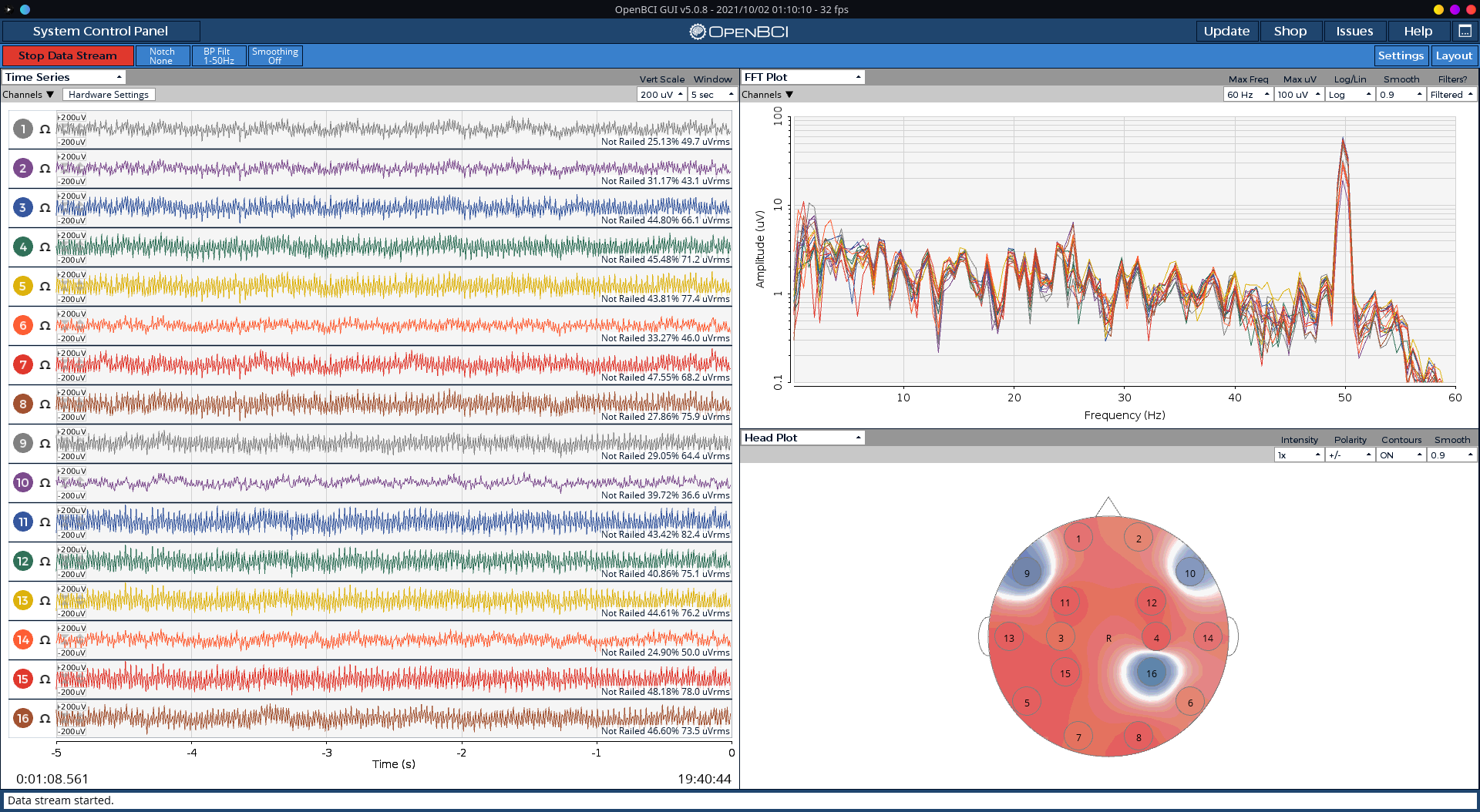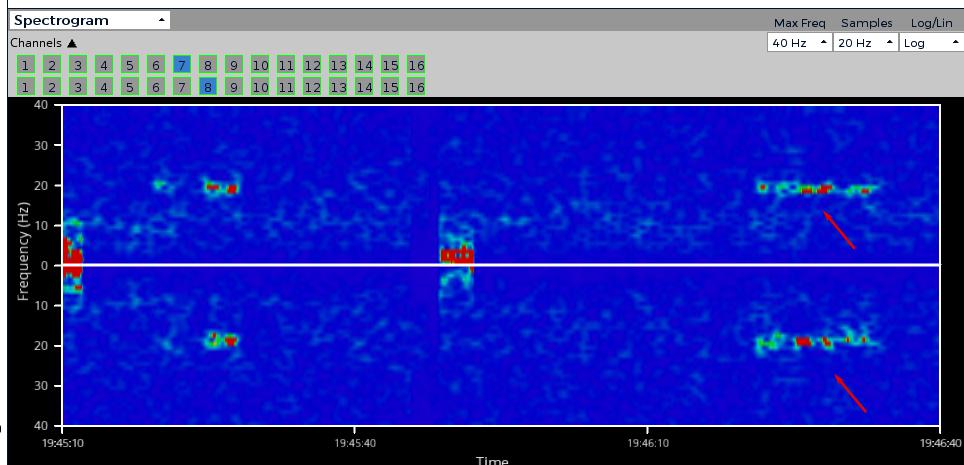Headset has arrived!
After waiting for one month and 6 days my OpenBCI EEG headset finally arrived on October 3!
For a couple of years I have been very interested in capturing data generated by human activities and using this to help people achieve their goals. This has resulted in some finished (stepwise) and many unfinished (snore tracker, …) projects. I’m still amazed that so little of the data generated by people is analysed and used to improve our lives.
So when, a couple of months ago, I learned of the OpenBCI headset (and all the other cool OpenBCI devices), I was very, very excited. What data could be more interesting than our inner thoughts!
Thanks to the excellent tutorial I was able to assemble the headset quickly.

I then downloaded the OpenBCI GUI software and made sure that I could access the USB dongle on Linux:

# What group is owner of the USB port? (This was uucp in my case)
ls -l /dev/ttyUSB0
# Does my user already belong to this group?
groups
# Add my user to this group
sudo usermod -a -G uucp koen
# Log out and log back in
# Check that my user now belongs to the uucp group
groupsAnd finally, I could see some pretty graphs!

Right from the start I was surprised by the levels of noise in the data. Especially, the power line noise (caused by the alternating current of the power grid, 50Hz in Europe) was way more intense than I expected.
Luckily, the GUI has the option to remove the line noise with a notch filter. And then we start to see some interesting things, such as eye blinks:

Or the heart rate:

But of course, these are not things we are targeting with an EEG device. Where is the data generated by the brains? This is actually quite tricky. It’s not really possible for an amateur to tell, from the squiggly lines on the EEG chart, what data is ‘real’ brain data and what is noise. The electric currents from individual brain cells are way too small to see individually. Luckily, in certain situations, large collections of neurons will synchronize and fire in a stable pattern. This occurs for example when you close your eyes: the neurons in your visual cortex will generate alpha waves, which are typically between 10Hz and 20Hz. So I closed my eyes and a little later I could see this graph:

Which is a real signal from the brain! Picked up by a heap of wires that I put together one hour earlier 😃.
In the next couple of months I’ll do some experiments to see whether we can also measure emotions. According to academic literature it should be possible to pick this up. I’m curious to see how well this will work in real life!
